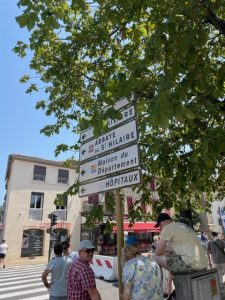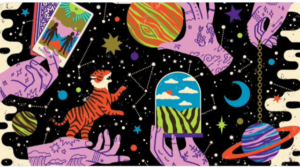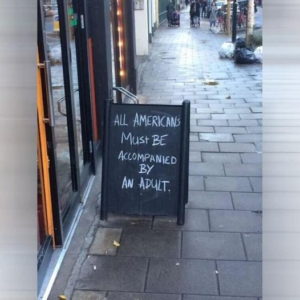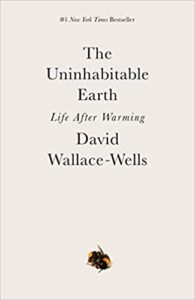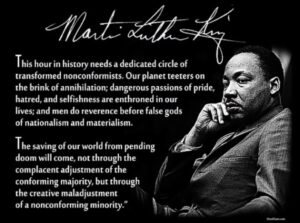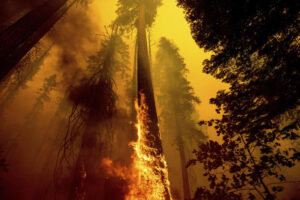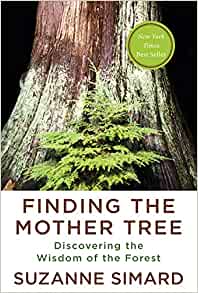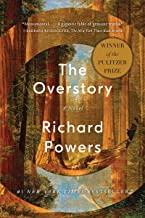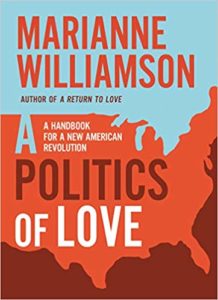Climate Emergency
Dayle in Limoux – Day # 15
July 19, 2022S
T
A
G
E
1
6
L I M O U X, F R A N C E ❗️
Look!
❤️🤍❤️🤍❤️🤍❤️🤍❤️🤍❤️🤍❤️🤍❤️🤍
Another gift from Le Tour de France!
Matches my pin from the 2004 Tour on the Champs Elysées in Paris when Lance won #6! Next Tour, the matching bike cap. :)
Gathered to watch the riders peloton through Limoux not far from my studio near the Place de la République. Met some amazing folks from France, Belgium, the U.S., and England.
And this is Claire. She speaks four languages, her husband, Henrik, 8…how is this even possible…they’ve lived all over the planet. So kind and fun and full of knowledge about the region and living in France.
We shared some shade, although much more humid today with the heat dome over Europe and the wild fires and the winds. Learning so much about life in France and local living.
L
O
V
E
To be away from the United States, the ugliness and violence, vitriol, petty focuses, the constant political and destructive noise is incredibly freeing with possibilities and potentials becoming so much more clear.
After the team cars and sponsors came through the riders were getting closer to continue their route to Foix!
And Wout! Again! 💚
Love these guys. Sláva Ukrayíni! They were so happy to be at the Tour and honor Ukraine.
And then they were gone.
Here’s a nice re-cap from GCN/Eurosport for today’s stage. There’s a link to connect.
‘It was an emotional victory for Hugo Houle, who descended into Foix to take Canada’s first Tour de France Stage Win in 34 years.’ gcn.eu/tdf2022
If you subscribe to their streaming service, you can watch the replay, Stage #16, and listen to the announcer describe the tender story of Hugo Houle’s brother as Hugo approaches the finish line. Beautifully expressed and timed right as he crosses the finish line and raises is arm in the air, pointing to the sky, for his brother. Hugo currently rides for UCI WorldTeam Israel–Premier.
My Sun Valley buds will appreciate this one. His shirt! (From former Yugoslavia, which he claims.)
And! A local celebrity. The mayor of Limoux, to the left of the speaker.
The Tour has been a diversion from a burning planet. Read this earlier:
“My scientific mind understands that this summer will be one of the coolest for the rest of our lifetimes unless we decide to treat the climate crisis like the emergency that it is,” said Andrea Dutton, a climate researcher at the University of Wisconsin-Madison
“The first truth is that we live in a nightmare. This is exactly what climate models projected was going to happen: intensifying extreme weather, severe public health consequences, and incredibly frustrating Congressional inaction. There is no reasonable scenario where the warming stops at 1.2°C, so it’s definitely going to get worse,” she said.
Super. But the U.S. continues to talk about the ‘fist bump.’ We need a Climate Strike. We don’t move until the leaders start saving the planet. Gaia is burning.
Read this, too:
‘Canadian law makers are debating giving refugee status to Americans seeking refuge from political and social violence.’ Cool. This is where profit, greed, corruption, and ideological extremes have landed us. Reframing the comment from Andrea Dutton, “It’s definitely going to get worse.”
Picked up some newspapers from a small marche on the way back after the Tour. Found this!
An expose of Joan! Wonderful. Quintessential authenticity. ✢
Love walking into these mini-marches and see an array of European newspapers, many perspectives and writers, like Charlie Hebdo.
À bientôt.
❀
Final days. #2022
December 30, 2021‘I regret nothing.’ -Edith Piaf
‘I’ve learned a great deal this year. What kind of year did you have? No matter how many challenges you’ve had, no matter what pain you’ve endured, did you do your very best? Then have no regrets.’ -A. Stoddard
As a collective we should have so many, and we can do so much better. We must. -dayle
Brian McLaren from the Center of Action and Contemplation:
“Something beautiful lies ‘unveiled’ on the other side of complexity and perplexity.”
Gatekeepers have long built razor-wire fences around us with
- beliefs
- rules
- policies
- controversies
- budgets
- programs
- activities
- rituals
- offerings
- inquisitions
Spirituality, though, is available to everyone, like wind, rain, and sun. [Brian McLaren] This is what we harness and share, and protect. “In politics, we’ve been studying war for centuries. We must now study how to crate the conditions for deep and lasting peace. We must now cherish life on earth and engage with it by focusing our best energies on learning to love neighbor, self, earth, and God…Gaia…who is Love.”
LATimes
What LA astronomers and diviners have in store for you in 2022.
-Deborah Netburn, staff writer
‘Spend time dreaming about the world in which you want to live…get specific about what real-life steps you can take to make it a reality. Ask, what does it mean to you to release the Earth, working with others to help the land rest more?’
Full piece [paywall]:
‘These are scary, uncertain times. The pandemic has thrown our lives into chaos once again. Global warming has upended the predictable flow of the seasons. The political climate is divisive and volatile. With all this anxiety swirling around us, is it any wonder that tarot readers, astrologers and other divinatory practitioners say they’ve never been busier? All of us want to know what will happen next.
From the Oracle at Delphi to the Yoruba practitioners of Ifá, there are myriad ways to approach divination and myriad reasons for wanting to see into the future. These tools can be seen as a framework to make sense of the events in our lives. Through this lens, divinatory practices encourage believers to pay attention to the patterns in their lives and the cycles of nature and to move through time with intention.
Los Angeles is among the most spiritually diverse cities in the world; we live alongside thousands of divinatory practitioners from a wide range of traditions — many of whom have devoted their lives to the study of ancient practices that go back thousands of years. As we enter a new calendar year, I asked a handful of them what archetypal energies they expect we’ll encounter over the next 12 months and how we might prepare.’
[Posted on twitter, as seen outside a pub in Europe.]
Eric Holthaus, The Phoenix:
“Any time a climate movie breaks through, it’s worthy of celebration. But this isn’t an ordinary climate movie. #DontLookUp![]() is special.”
is special.”
In the last days of 2021, a year in which Texas froze and the freakin’ ocean caught fire, the number one movie in the world on Netflix is a star-studded climate movie that’s not about climate.
Let me be super clear: Any time climate breaks through, it’s worthy of celebration. But this isn’t an ordinary climate movie. Don’t Look Up is special.
Watching it last night for the first time, I was legitimately blown away by how much I felt like I could relate to the main plot — well-meaning scientists being ignored because their message wasn’t pleasant or profitable. I was scared to watch it because I was worried it would make me feel even more depressed than I already do about being a climate communicator during these decades of climate delay, but it’s just the opposite. This is the climate movie I was waiting for.
“The reason I think Don’t Look Up works so well is because the film’s creators did their homework. There are so many Easter Eggs thrown in throughout that it’s like a love letter to climate activists. There is a massive, waiting audience for authentic climate movies like this that speak to the deep, existential anxiety of being alive at this profoundly terrifying moment in history. We know how to solve the climate emergency — stop burning fossil fuels, build up a circular, caring society, and shift political power so that nothing like it ever happens again — and yet our leaders are staring us straight in the face and saying no.
Director Adam McKay wrote that his own climate anxiety after reading David Wallace-Wells’ The Uninhabitable Earth helped inspire the film, and screenplay co-writer David Sirota wrote that empowering the climate movement was a primary goal of the film.
I reached out to McKay and Sirota, and they both confirmed this hunch I had that the movie wasn’t just a political satire, it was a gift for battle-weary activists after several long, hard years of struggle. “We literally made Don’t Look Up for the climate community,” McKay told me.
When I asked Sirota about the movie’s lack of a preachy, prescriptive call-to-action takeaways at the end, he said that was intentional.
“We want it to be a clarion call for the movement,” Sirota said, “But also respect that the movement should decide its tactics.”
The movie isn’t perfect. There’s too much of a focus on the United States, and there’s a valid criticism that seeking action from corrupt politicians during a time of crisis is counterproductive. We know that climate action at the scale and scope we need will only come from collective movements.
But that’s exactly our job now — tell more climate stories that build on this one.
This isn’t a movie that could exist without the decades of failures that have happened so far. But it’s also a movie that finally FINALLY acknowledges that the lynchpin to taking action on climate isn’t about data or carbon or graphs, it’s about finding our shared humanity.
That part is working:
Authentic climate action is way easier than shooting nukes at a comet — it’s treating each other and the Earth better. It’s listening. It’s building systems of power to replace the systems that have been built to kill us.
It’s up to us, the climate movement, to redirect the energy that Don’t Look Up gives us.”
David Wallace-Wells:
“Globally, 250 million people live within three feet of high tide lines. Ten feet of sea level rise would be a world-bending catastrophe. It’s not only goodbye Miami, but goodbye to virtually every low-lying coastal city in the world.”
“Thwaites Glacier is the size of Florida. It is the cork in the bottle of the entire West Antarctic ice sheet, which contains enough ice to raise sea levels by 10 feet.” The great Jeff Goodell on the scary signs from the “Doomsday” glacier.
Rolling Stone
by Jeff Goodall
‘The Fuse Has Been Blown,’ and the Doomsday Glacier Is Coming for Us All
New data suggests a massive collapse of the ice shelf in as little as five years. “We are dealing with an event that no human has ever witnessed,” says one scientist. “We have no analog for this”
“Given the ongoing war for American democracy and the deadly toll of the Covid pandemic, the loss of an ice shelf on a far-away continent populated by penguins might not seem to be big news. But in fact, the West Antarctic ice sheet is one of the most important tipping points in the Earth’s climate system. If Thwaites Glacier collapses, it opens the door for the rest of the West Antarctic ice sheet to slide into the sea. Globally, 250 million people live within three feet of high tide lines. Ten feet of sea level rise would be a world-bending catastrophe. It’s not only goodbye Miami, but goodbye to virtually every low-lying coastal city in the world.”
Power in disorder (Joan Didion). Let’s reclaim it now.
Order, disorder, reorder (Father Richard Rohr).
Pandemic life.
Climate Emergency.
Pari Center, Italy.
COP26 🌏
November 6, 2021‘Earth, isn’t this what you want: an invisible arising in us … what is your urgent command, if not transformation?’ -Rilke, Ninth Duino Elegy
For centuries we have been content to patch up holes temporarily (making ourselves feel benevolent) while in fact maintaining the institutional structures that created the holes to begin with (disempowering those on the margins). Now it has caught up with us. —Fr Richard Rohr, Center for Action & Contemplation
The cosmic common good provides a larger moral perspective, but it also exhorts us to “sink our roots deeper” into our native place and to work for the good of our place on Earth. —Daniel Scheid, theologian
Washington Post
“The bipartisan measure to improve the nation’s roads, bridges, ports and broadband connections won passage after liberals allowed the vote. The package, crafted by Democrats and Republicans, fulfills a major campaign promise for President Biden. It cleared the Senate on a bipartisan basis in August.”
The infrastructure plan costs $1.2 trillion over eight years, with $550 billion in new spending:
- $110 billion for roads, bridges and other infrastructure fix-ups. Of that, $40 billion is new funding for bridge repair, replacement and rehab.
- $73 billion for electric grid and power structures.
- $66 billion for rail.
- $65 billion for broadband.
- $55 billion for water infrastructure.
- $21 billion for environmental remediation.
- $47 billion for flooding and coastal resiliency, as well as “climate resiliency,” including protections against fires.
- $39 billion to modernize transit — the largest federal investment in public transit in history, according to the White House.
- $7.5 billion for electric vehicles and EV charging … $2.5 billion for zero-emission buses … $2.5 billion for low-emission buses … $2.5 billion for ferries.
Climate Emergency
October 17, 2021‘In order to receive the Native American tradition of exchange, put down the idea that the earth is nothing more than a vast accumulation of natural resources, learning from all our relations.’ -Steven Charleston, Choctaw Nation
For Senator Joe Manchin:
From Dan Rather, Elliot Kirschner, and Steady Team, Will We Vote For Planet Earth?
“I must confess that as a journalist and a citizen, I came too late to a full grappling of the scope of our global climate crisis.
Reporting on the news, I of course was aware of the issue bubbling forth in the distant horizons of the newscycle decades ago. But it was too easy to cover it as theoretical. Its epic and all-encompassing stature made it difficult for me to put it into adequate context. World wars I could somehow understand. I lived through one. I could even understand a Cold War that put all of Earth in peril. But the idea that somehow the accrual of the countless small actions of modern life – picking up groceries at the store, turning up the heat, buying furniture made overseas – could invisibly threaten the balance of the planet, was difficult to grasp. And even for journalists, the noise produced by those who “questioned the science” was disruptive and destructive.
That I have not been alone in my evolution on this issue does not provide me with much solace. That far too many others still do not see the ruinous urgency of this moment, fills me with sadness and dread. My journey on our precious planet is nearing an end, but I think of my children, my grandchildren, and the countless billions just starting life and those yet unborn. What kind of world will they inherit?
These thoughts are never far below the surface, and they can rush forth with great power at the slightest provocation. But what we are seeing now in the United States Senate, specifically the actions of Joe Manchin who is insisting that powerful provisions meant to heal our dependence on dirty fossil fuels be stripped from the reconciliation bill, is not merely an act of denial. It is a line in the sand that will soon be wiped away by rising seas – both literal and figurative.
Senator Manchin deserves all the scrutiny he is getting. Reporters should try to follow the money and dig into his strong connections to coal and other fossil fuel interests. But I suspect he will not ever budge. And furthermore, all fair coverage should also state at the top of the story that the entire Republican caucus stands with him in opposition to meaningful action on the climate crisis. A few years ago, I would marvel at how this one issue could generate such complete disregard, and indeed contempt, for scientific consensus. But with the pandemic we see the rot on that score is far more pervasive.
I think that for younger readers it might be difficult to see how much has changed on this issue, even as the kind of meaningful action we need remains maddingly elusive. When I was a child growing up in Houston, it was a small city with aspirations of greatness. Its path to wealth would be paved with oil, a business that employed my father even during the dark days of the Great Depression. We had no idea that something we pulled from the ground could be so destructive. Rather we saw it as the means for breathtaking progress. Cars went from a luxury to an accessible part of daily life. We could move in ways we hadn’t before. We could power light during darkness. We saw fossil fuels we as the foundation for modernity.
All the while, as we burned oil, gas, and coal, we saw what could be accomplished with energy. It helped us defeat the Nazis. It propelled us into space. It brought higher standards of living to the far corners of the globe. We were not immune to its dirtiness. We could see the polluted air, the oil spills, the coal mines. But like much of the early environmental movement, the focus was almost exclusively on local and regional pollution – a lake, a shoreline, or the air trapped in a valley.
As scientists began to sound the alarm with increased frequency and fear, the issue of our climate did migrate more firmly into the center of our political consciousness as well. But even for people who really understood it and cared about it, it had a way of hovering in the middle level of lists of concern. So we dithered, stalled, and took half measures. Cynical actors framed the issue as the environment on one side and our economy on the other, without enough people understanding the fate of the two would become increasingly intertwined. The echoes of what we have seen with the pandemic in this regard, and others, are chilling.
What is so frustrating is that we already know where this story will go. The climate will get worse. The deadly impacts, already being felt all around the world, will increase. The younger generation, already more revved up for action, will replace those who rose to power during the age of inaction. And eventually we will act to stem damage that was avoidable if we had acted earlier. There will be a time when we will not get energy from fossil fuels. There will be no other choice. The choice of how to do it and how fast is the one for our moment (and the moments already past). But our political system, mired in stasis, is blinking once again.
It is easy to write about the climate and play the notes of despair. This is not being cynical; there is bad news everywhere. But like the pandemic, there can be reasons for hope. Science is giving us remarkable tools to fight this. The costs of alternative energy are plummeting. We will continue to innovate in how we make and use energy. We can learn about remediation efforts, the role of forests to capture carbon, and new hi-tech tools. More and more people will go into fields looking to undo the damage. With all the activity and money that will flow into the field, there will be new inventions that we cannot predict. In the meantime, we can prioritize local and state action. And most importantly we can elevate climate change to be at the top of our agenda.
I believe it can be a rallying cry for voters. I didn’t believe that in the past. But as the issue becomes worse, the salience of it as a reason to vote will increase. The energy (no pun intended) I see around fighting climate change has become palpable. As we deal with storms and fires and heat waves, as we see greater flooding and droughts, I suspect we will see more demands made at the ballot box. I don’t think the political class fully understands how quickly this can become an explosive issue. Much as vaccine mandates are popular so too will big action on the climate. Here there really is a silent majority and it will only grow. It’s long past time, however, that it stopped being so silent.
I will use whatever platform I have to raise this issue with consistency and urgency. I hope you will help me amplify the message and add your own voices. I know many of you feel you have been in this battle for a long time, and that the results have been woefully inadequate. That is true. But I have seen this before in other instances – the old saw of it being darkest before the dawn. Far too much damage to Earth has already occurred, but there will be progress in ways we cannot predict. There will be action, and the sooner it happens the more of our precious home we can save.”
Robert Ellsberg, “Has there ever been a pop who spoke like this? Pope Francis’s message to the World Meeting of Popular Movements.”
“Right now our brains and hands are not enough, we also need our hearts and our imagination; we need to dream so that we do not go backwards.”
Environmentalist Bill McKibben:
(Senator Joe Manchin) plans to gut Biden’s climate plan, and with it the chances for swift global progress. This is high on the list of most consequential actions ever taken by an individual Senator; you’ll be able to see the impact of this vain man in the geologic record.
The Mother Trees
October 9, 2021CBS
Northern California wildfires may have killed hundreds of giant sequoias as they swept through groves of the majestic monarchs in the Sierra Nevada, an official says.
“It’s heartbreaking,” said Christy Brigham, head of resource management and science for Sequoia and Kings Canyon national parks.
The lightning-caused KNP Complex that erupted on Sept. 9 has burned into 15 giant sequoia groves in the park, Brigham said.
More than 2,000 firefighters were battling the blaze in sometimes treacherous terrain. On Wednesday afternoon, four people working on the fire were injured when a tree fell on them, the National Park Service reported.
The four were airlifted to hospitals and “while the injuries are serious, they are in stable condition,” the report said. It didn’t provide other details.
The KNP Complex was only 11% contained after burning 134 square miles of forest. Cooler weather has helped slow the flames and the area could see some slight rain on Friday, forecasters said.
The fire’s impact on giant sequoia groves was mixed. Most saw low- to medium-intensity fire behavior that the sequoias have evolved to survive, Brigham said.
However, it appeared that two groves – including one with 5,000 trees – were seared by high-intensity fire that can send up 100-foot flames capable of burning the canopies of the towering trees.
That leaves the monarchs at risk of going up “like a horrible Roman candle,” Brigham said.
Two burned trees fell in Giant Forest, which is home to about 2,000 sequoias, including the General Sherman Tree, which is considered the world’s largest by volume. However, the most notable trees survived and Brigham said the grove appeared to be mostly intact.
In one grove, Dickman counted 29 sequoias that were “just incinerated,” he told CNN.
“There were four of those that had burned so hot that they’d fallen over,” he said.
The 152-acre fire was 75% contained.
cbsnews.com
Highly recommend:
Imagine if Zuckerberg and the media spent as much energy and time covering the climate emergency, our planet, our dear Gaia, as they do the former president and hateful, divisive rhetoric. Imagine. Two senators, two, tied to fossil fuel and special interests, dark money, may proclude our ability to change this awful climate trajectory. Zero compassion for Earth and humanity’s future. They. Do. Not. Care. Only power, greed, self-interest. I live in Idaho. Our elected leaders do not represent their constituents, only the GOP and their lobbyists. They will do nothing. -dayle
“Then shall all the trees of the forest sing for joy before the Lord.
1 Chronicles 16:33
Iowa, California, Lousiana, Greenland…
August 28, 2020#ClimateEmergency
Hopeful thoughts from a climate correspondent.
“The climate emergency is very bad. Over the past few days, disasters have cascaded around the world. But no matter how dire the pandemic-climate-racial uprising emergency gets, there is never, ever a reason to give up.” -Eric Holthaus
On climate doom
Hi,
Over the past few days, disasters have cascaded around the world. More of California burned in a one-week span than in almost any other full year in recorded history. Hurricanes have battered the Caribbean and the US Gulf Coast. The strongest typhoon in North Korea’s history made landfall. Scientists unveiled doomsday updates from Greenland, Antarctica, and the North Pole.
Watching all this, I felt a familiar sense of despair settle in. When disasters are in the headlines, I often have a counter-intuitive response. My mind automatically races to the countless everyday changes in weather that go largely unnoticed, but in aggregate add up to civilisation-altering, fundamental changes that once manifest, become irreversible.
I find myself noticing the impulse to give in to climate doom.
This thread from my friend and former podcast co-host Jacquelyn Gill explains how this instinct is partly a result of privilege in climate spaces. It’s often easier to imagine the apocalypse than the systemic changes necessary in every aspect of society to steer us away from oblivion.
The climate emergency is very bad. It magnifies inequalities. It’s a manifestation of hundreds of years of injustice and erasure.
But if you find yourself thinking “we’re screwed”, here’s a gentle reminder to ask yourself who “we” is. This has been happening for a long time.
This week’s good news on climate
We need to move past the “we’re screwed” narrative on climate change and ecosystem collapse. Fast. A dead world is not our destiny.
Yes, the odds are against us as long as we stay on our current path. But we can and must radically change that path. We can do this, and we will.
We’ve reached the point in the pandemic-climate-racial uprising emergency that there are multiple versions of reality floating around and it’s very difficult to keep track of reality.
Hope is hard work.
and some people just aren’t willing to do it.
I’ve subscribed to the concept of atmospheric harm reduction. Harm reduction is a strategy that’s used to de-escalate violence and self-harm, and involves things like sanitised needle distribution or legalising and regulating marijuana.
The same applies to the climate emergency. Every tonne of carbon avoided through developing tough new habits, every climate denier voted out of office and replaced with an imperfect-but-better candidate, every difficult conversation that helps you articulate your ardent love for the world and everything that’s worth saving – all of those help make the world a measurably better place.
There are days when it will feel like you can’t go on, that all your work is pointless. But in those days remember that a better world is always possible. We can take breaks. We can endure setbacks. But we can never, ever give up. You were born just in time to transform the world.
https://thecorrespondent.com/652/on-climate-doom/86316088628-71047c4c
Center for Action & Contemplation: disconnection and love
May 7, 2019‘I’m convinced that beneath the ugly manifestations of our present evils—political corruption, ecological devastation, warring against one another, hating each other based on race, gender, sexual orientation, religion, or nationality—the greatest dis-ease facing humanity right now is our profound and painful sense of disconnection. We feel disconnected from God, certainly, but also from ourselves (especially our bodies), from each other, and from our world. Our sense of this fourfold isolation is plunging our species into increasingly destructive behavior and much mental illness.
Yet many are discovering that the Infinite Flow of the Trinity—and our practical, felt experience of this gift—offers the utterly grounded reconnectionwith God, with self, with others, and with our world that all spirituality, and arguably, even politics, is aiming for, but which conventional religion and politics fail to access.
Trinity overcomes the foundational philosophical problem of “the One and the Many.” Serious seekers invariably wonder how things can be both deeply connected and yet clearly distinct. In the paradigm of Trinity, we have three autonomous “Persons,” as we call them, who are nevertheless in perfect communion, given and surrendered to each other with an Infinite Love. With the endless diversity in creation, it is clear that God is not at all committed to uniformity but instead desires unity—which is the great work of the Spirit—or diversity overcome by love.
Uniformity is mere conformity and obedience to law and custom; whereas spiritual unity is that very diversity embraced and protected by an infinitely generous love.
This is the problem that our politics and most superficial religion are still unable to resolve.
Trinity is all about relationship and connection. We know the Trinity through experiencing the flow itself, which dissolves our sense of disconnection. The principle of one is lonely; the principle of two is oppositional and moves us toward preference and exclusion; the principle of three is inherently moving, dynamic, and generative. Trinity was made to order to undercut all dualistic thinking. Yet Christianity shelved it for all practical purposes because our dualistic theologies could not process it.
God is not a being among other beings, but rather the Ground of Being itselfwhich then flows through all beings. As Paul says to the intellectuals in Athens, this God “is not far from us, but is the one in whom we live and move and have our being” (Acts 17:27-28). The God whom Jesus reveals is presented as unhindered dialogue, a positive and inclusive flow, and a waterwheel of outpouring love that never stops! St. Bonaventure called God a “fountain fullness” of love.
Our sense of disconnection is only an illusion. Nothing can stop the flow of divine love; we cannot undo the eternal pattern even by our worst sin. God is always winning, and God’s love will finally win in the end. Nothing humans can do can stop the relentless outpouring force that is the divine dance. Love does not lose, nor does God lose. That’s what it means to be God!’
Image credit: (detail), Andrei Rublev, c. 1400-1410, Tretyakov Gallery, Moscow, Russia.
Trinity: The Trinity depicts the three angels who visited Abraham at the Oak of Mamre (Genesis 18: 1-8); the painting is full of symbolism and is interpreted as an icon of the Holy Trinity. At the time of Rublev, the Holy Trinity was the embodiment of spiritual unity, peace, harmony, mutual love and humility.
Marianne Williamson, Democratic Presidential Candidate who bases her platform on love and connection, needs only 2,400 singular donations [$1-$5], 65,000 total, to be allowed to join the first debates schedule for June in Miami. Please donate at https://www.marianne2020.com
“A nation’s behavior is just like an individual’s – either an expression of our higher nature or our lower nature. In the case of both, cause and effect holds: whatever we do has consequences. Love leads to harmony & lovelessness to chaos.That’s why wisdom is relevant to politics.”









